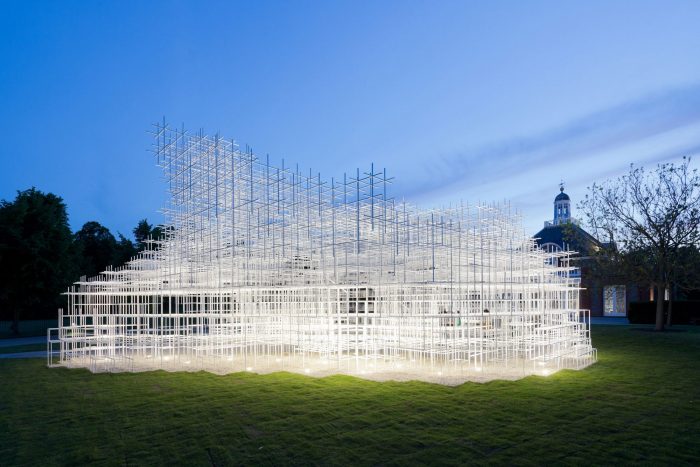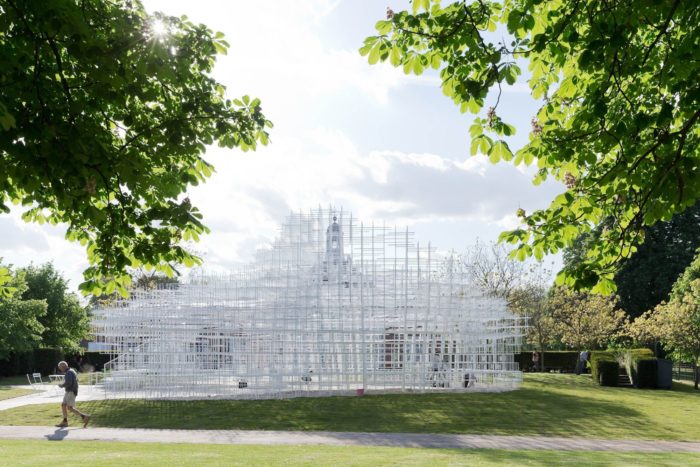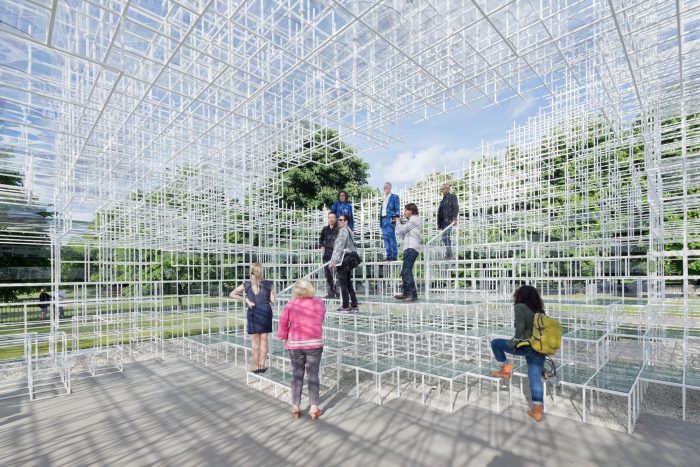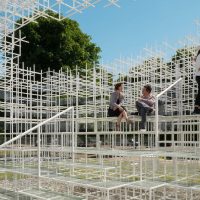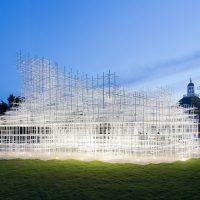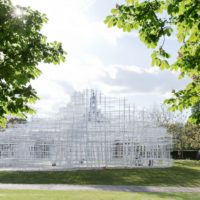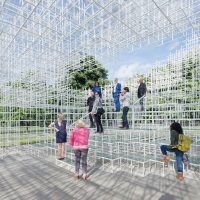Marcus Prize 2013
Every young architect needs role models and the graduate students of University of Wisconsin-Milwaukee were lucky enough to learn from one of the best: Sou Fujimoto. In 2013, the renowned Japanese architect won the $100,000 Marcus Prize – an award “offered worldwide to recognize architects ‘on a trajectory to greatness’ “, given by the Milwaukee-based Marcus Corporation Foundation and administered by The School of Architecture and Urban Planning (SARUP) in the US . The award is also a win for the city, as, in 2014, Fujimoto was invited to work with graduate students of SARUP, during the spring semester. The result of the collaboration, coordinated by Dean Mo Zell, was faBRICK – a small installation meant to revitalize an unused lot in Milwaukee’s East Side during the summer.
The installation consisted of a linear “chain” of bricks, connected with bolts, anchoring plates and plywood, forming wave-resembling “arches”. Unlike vaulted arches, these are compressed horizontally and are held in place by friction. As fun as the construction process was, judging from the workshop’s Tumblr and Vine pages, it was overshadowed by the participants’ interaction with Sou Fujimoto – it is not surprising, considering their opportunity to discuss with one of the most important architects of the 21st century.
Returning to Fujimoto, the renowned architect was born in 1971, in Hokkaido, Japan. He graduated from the Department of Architecture, Faculty of Engineering, in Tokyo. After establishing his own firm, Sou Fujimoto Architects, in 2000, his work was soon acknowledged, receiving many awards, such as the Architectural Review Award, three years consecutively, and the Grand Prize in 2006, and the Japan Institute of Architects Award in 2008.
Also in 2008, his “Primitive Future” book was the bestselling architectural book of the year and, in 2010, El Croquis dedicated their 151 number to his work: “Sou Fujimoto – Futuro Primitivo. 2003-2010”. In his theoretical work, he develops his architectural approach and his preference for a new “weaker” order – one that is not defined by traditional architectural elements, but one that emerges from primitive origins, such as the cave or forest, as he likes to refer to Tokyo. Living there and traveling throughout Europe have had an
impact on his architecture, as he writes.
I
n 2013, he received the Marcus Prize as a recognition of his promising young career – a prize which offered young architects the chance of learning from one of their mentors. The same year, he was invited to design the Serpentine Gallery Pavilion, thus becoming the youngest architect to receive this honor and joining the “club” of star architects. Surely his career will continue to grow, shaping the path of 21st century architecture and inspiring new talents.
By: Ana Cosma
- Photography by © Jim Stephenson
- Photography by © Jim Stephenson
- Photography by © Jim Stephenson
- Photography by © Jim Stephenson


